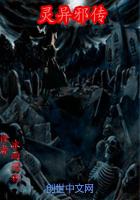That eminent theorist of Pre-Raphaelitism, Sir James Tuckett, does not shrink from placing the Madonna of the National Gallery on a level with the masterpieces of Christian art. "By giving to the Virgin's head," says Sir James Tuckett, "a third of the total height of the figure, the old master attracts the spectator's attention and keeps it directed towards the more sublime parts of the human figure, and in particular the eyes, which we ordinarily describe as the spiritual organs. In this picture, colouring and design conspire to produce an ideal and mystical impression. The vermilion of the cheeks does not recall the natural appearance of the skin; it rather seems as if the old master has applied the roses of Paradise to the faces of the Mother and the Child."
We see, in such a criticism as this, a shining reflection, so to speak, of the work which it exalts; yet MacSilly, the seraphic aesthete of Edinburgh, has expressed in a still more moving and penetrating fashion the impression produced upon his mind by the sight of this primitive painting. "The Madonna of Margaritone," says the revered MacSilly, "attains the transcendent end of art. It inspires its beholders with feelings of innocence and purity; it makes them like little children. And so true is this, that at the age of sixty-six, after having had the joy of contemplating it closely for three hours, I felt myself suddenly transformed into a little child. While my cab was taking me through Trafalgar Square I kept laughing and prattling and shaking my spectacle-case as if it were a rattle. And when the maid in my boarding-house had served my meal I kept pouring spoonfuls of soup into my ear with all the artlessness of childhood."
"It is by such results," adds MacSilly, "that the excellence of a work of art is proved."
Margaritone, according to Vasari, died at the age of seventy-seven, "regretting that he had lived to see a new form of art arising and the new artists crowned with fame."
These lines, which I translate literally, have inspired Sir James Tuckett with what are perhaps the finest pages in his work. They form part of his "Breviary for Aesthetes"; all the Pre-Raphaelites know them by heart. I place them here as the most precious ornament of this book. You will agree that nothing more sublime has been written since the days of the Hebrew prophets.
MARGARITONE'S VISION
Margaritone, full of years and labours, went one day to visit the studio of a young painter who had lately settled in the town. He noticed in the studio a freshly painted Madonna, which, although severe and rigid, nevertheless, by a certain exactness in the proportions and a devilish mingling of light and shade, assumed an appearance of relief and life. At this sight the artless and sublime worker of Arezzo perceived with horror what the future of painting would be. With his brow clasped in his hands he exclaimed:
"What things of shame does not this figure show forth! I discern in it the end of that Christian art which paints the soul and inspires the beholder with an ardent desire for heaven. Future painters will not restrain themselves as does this one to portraying on the side of a wall or on a wooden panel the cursed matter of which our bodies are formed; they will celebrate and glorify it.
They will clothe their figures with dangerous appearances of flesh, and these figures will seem like real persons. Their bodies will be seen; their forms will appear through their clothing. St. Magdalen will have a bosom. St. Martha a belly, St. Barbara hips, St. Agnes buttocks; St. Sebastian will unveil his youthful beauty, and St. George will display beneath his armour the muscular wealth of a robust virility; apostles, confessors, doctors, and God the Father himself will appear as ordinary beings like you and me; the angels will affect an equivocal, ambiguous, mysterious beauty which will trouble hearts. What desire for heaven will these representations impart? None; but from them you will learn to take pleasure in the forms of terrestrial life. Where will painters stop in their indiscreet inquiries? They will stop nowhere. They will go so far as to show men and women naked like the idols of the Romans. There will be a sacred art and a profane art, and the sacred art will not be less profane than the other."
"Get ye behind me, demons," exclaimed the old master. For in prophetic vision he saw the righteous and the saints assuming the appearance of melancholy athletes. He saw Apollos playing the lute on a flowery hill, in the midst of the Muses wearing light tunics. He saw Venuses lying under shady myrtles and the Danae exposing their charming sides to the golden rain. He saw pictures of Jesus under the pillar's of the temple amidst patricians, fair ladies, musicians, pages, negroes, dogs, and parrots. He saw in an inextricable confusion of human limbs, outspread wings, and flying draperies, crowds of tumultuous Nativities, opulent Holy Families, emphatic Crucifixions. He saw St. Catherines, St. Barbaras, St. Agneses humiliating patricians by the sumptuousness of their velvets, their brocades, and their pearls, and by the splendour of their breasts. He saw Auroras scattering roses, and a multitude of naked Dianas and Nymphs surprised on the banks of retired streams. And the great Margaritone died, strangled by so horrible a presentiment of the Renaissance and the Bolognese School.














